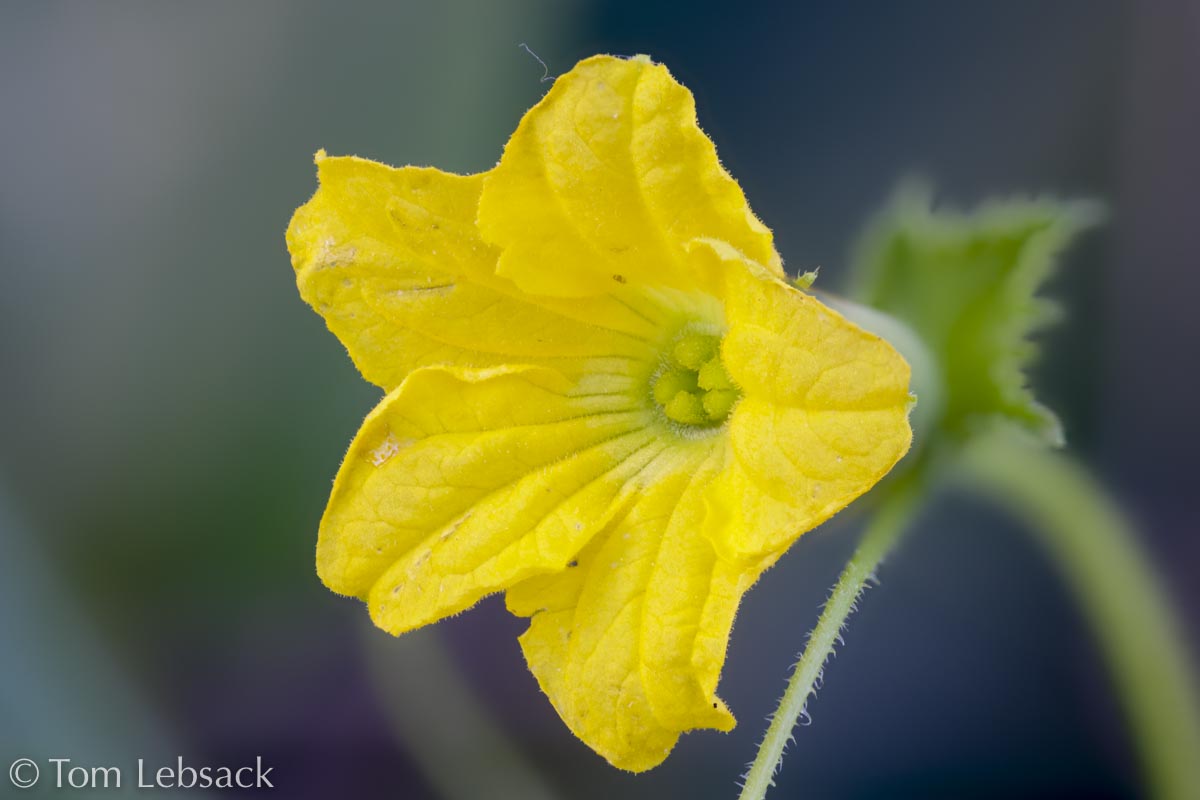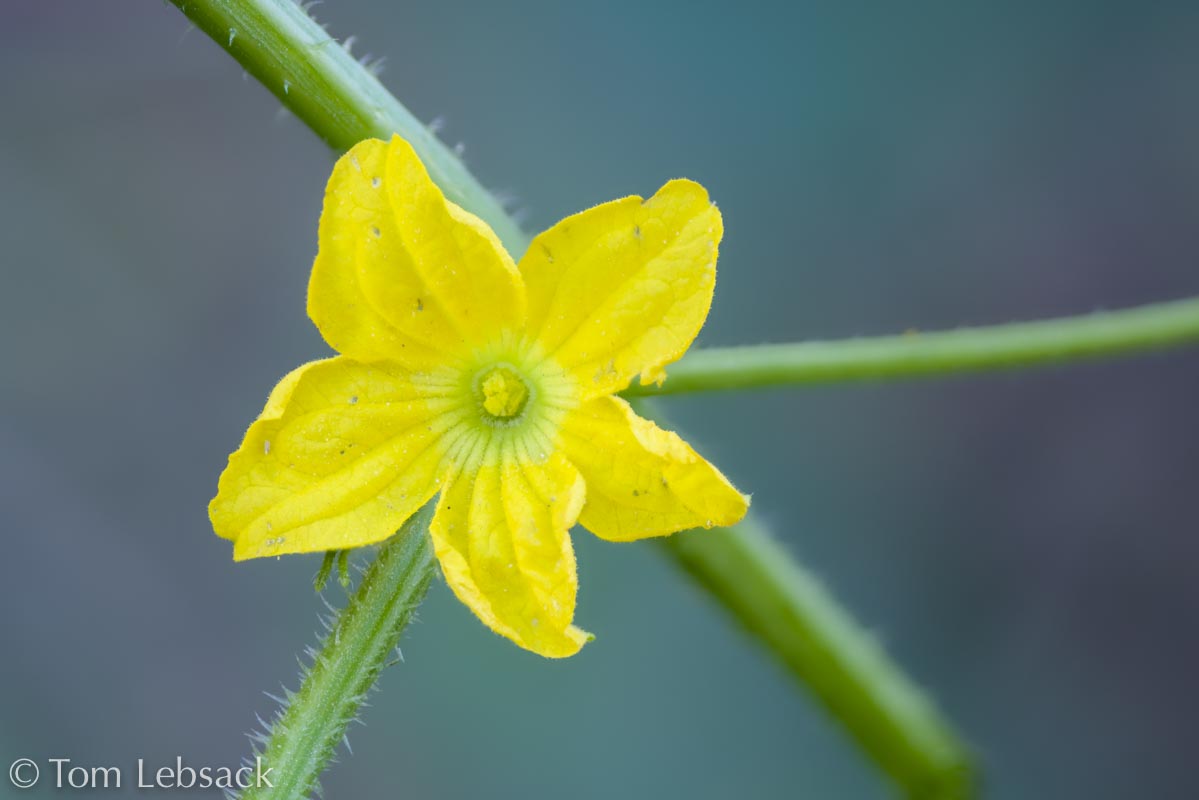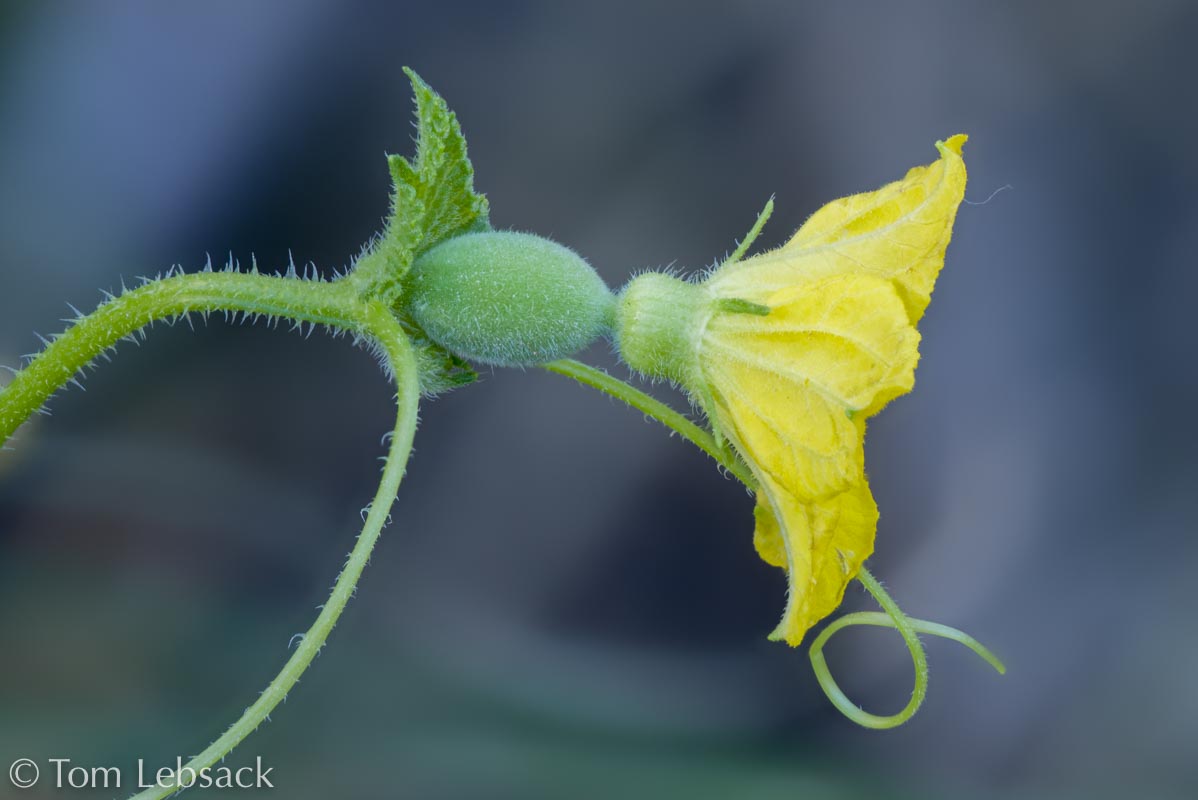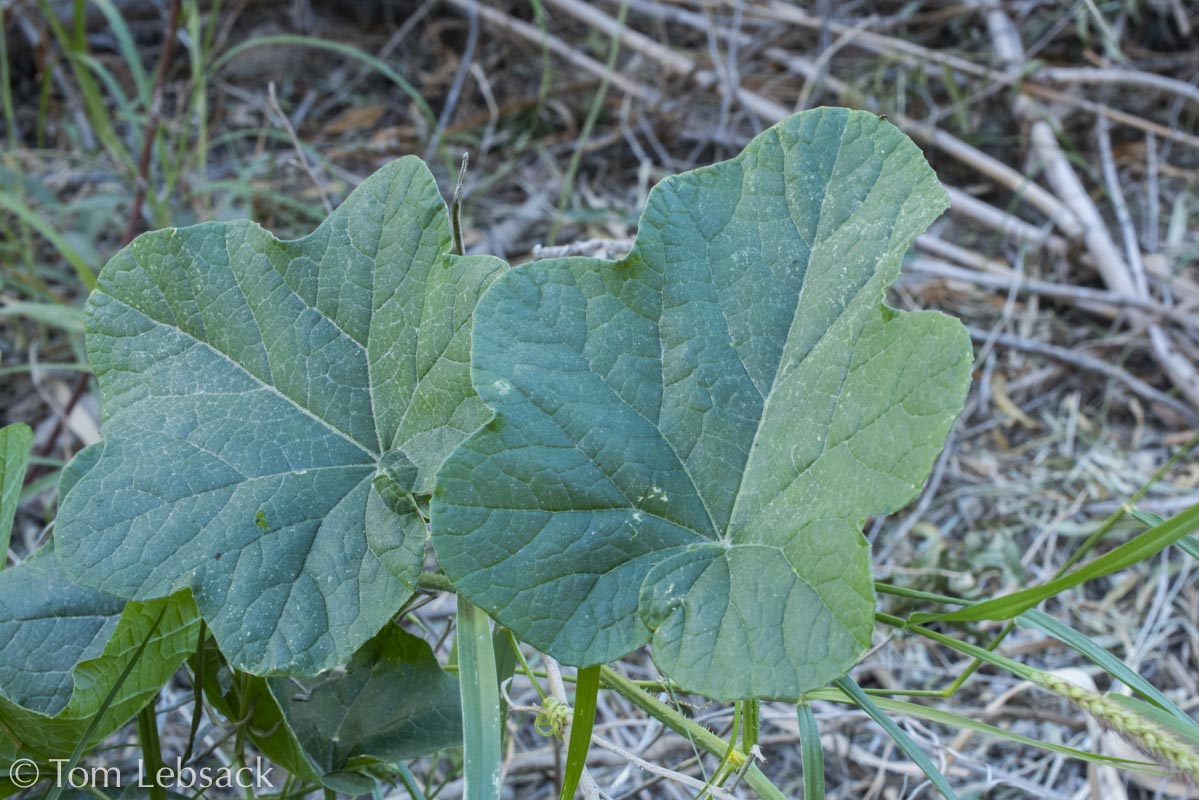Texas Wildbuds
Cucumis melo
(Cantaloupe)
| Scientific Name | Cucumis melo | USDA PLANTS Symbol | CUME |
| Common Name | Cantaloupe, Muskmelon, Honeydew | ITIS Taxonomic Serial No. | 22362 |
| Family | Cucurbitaceae (Gourd) | SEINet Reference |
Click Here |
| Description | Habitat: Normally a cultivated plant in sunny, open areas with well-drained, deep soils; also found in disturbed sites, abandoned fields, along rivers, and open woods. Plant: Annual (or perennial) trailing to somewhat climbing vine; stems 6 to 9 feet long; striations along stems; simple, unbranched tendrils at stem tips. Leaves: Large alternate leaves about 5 inches across, nearly round to almost kidney (reniform)-shaped blades; 3 to 5-lobed in outline, green or gray-green with pubescent hairs; undulate margins. Inflorescence: Yellow, showy, bell-shaped flowers with 5 lobes with rounded tips, each flower about 1-inch across; monecious (male and female flowers on same plant) flowers growing in leaf axils; female (pistillate) flowers are solitary, with a short style and 3-lobed stigma; ellipsoid-shaped ovary below is up to 0.4-inch long and covered with pubescent hairs; male (staminate) flowers grow in clusters of 2 to 7 and have 3 stamens; flowers on pedicels 1/4 to 1-1/2 inches long; calyx is bell-shaped with 5 linear lobes about 1/3-inch long or less and covered in pubescent hairs. Bloom Period: May to October; flowers are open for just one day. Fruit: Young fruit, a "pepo" or melon, is dark green mottled, ripening to bright lemon yellow, pale green, or tan in color; flesh is white, green, or orange and somewhat bitter to very sweet; mature fruit can weigh 1 to 4+ pounds. References: "Manual of the Vascular Plants of Texas" by Correll and Johnston, University of Michigan and Alabama Plant Atlas. Note: Introduced from Europe and Africa, the plant is widely grown as a commercial crop around the world. Images of plants here were taken along the Rio Grande from escapees. |
BONAP Distribution Map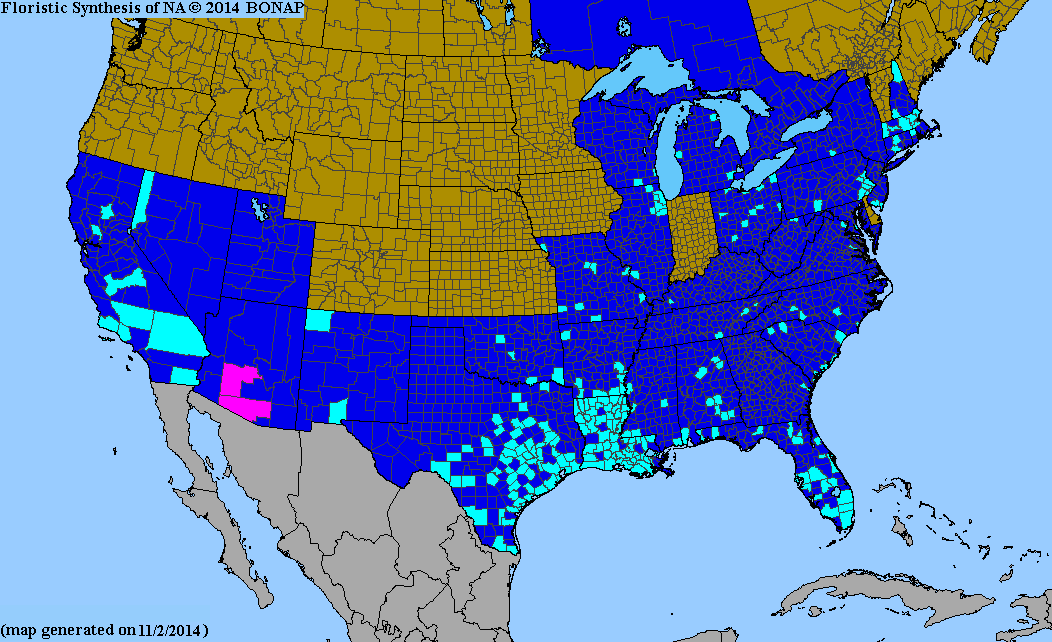 Map Color Key |
Texas Status: Introduced |
Banner photo of Castilleja indivisa and Lupinus ssp. taken along FM 1323 north of Johnson City, Blanco County
© Tom Lebsack 2025
Every attempt is made to provide accurate, up-to-date, and relevant information, but the completeness or accuracy of any information presented on this website cannot be guaranteed. I use authoritative references to insure high standards of accuracy and review and update the information frequently.
